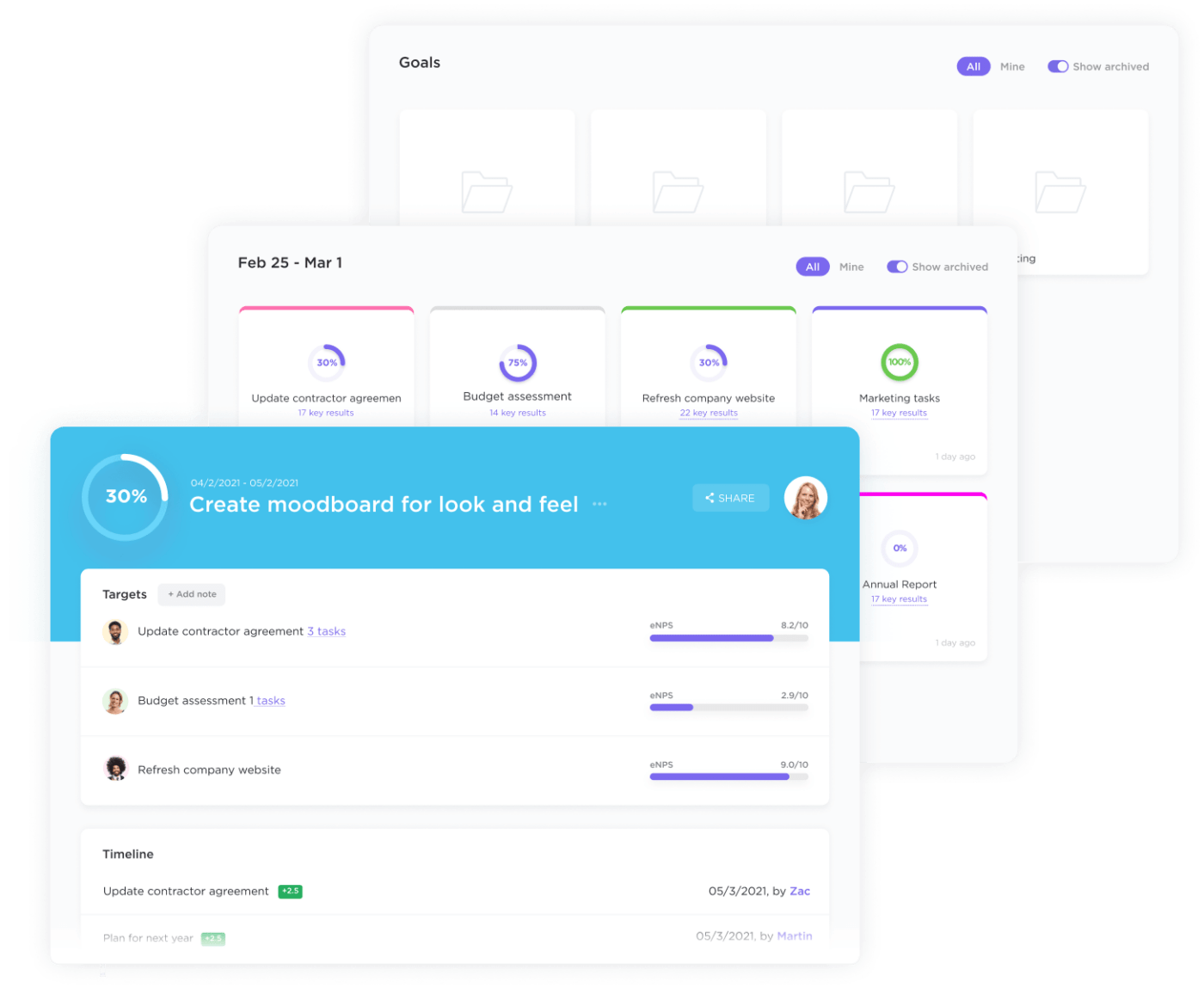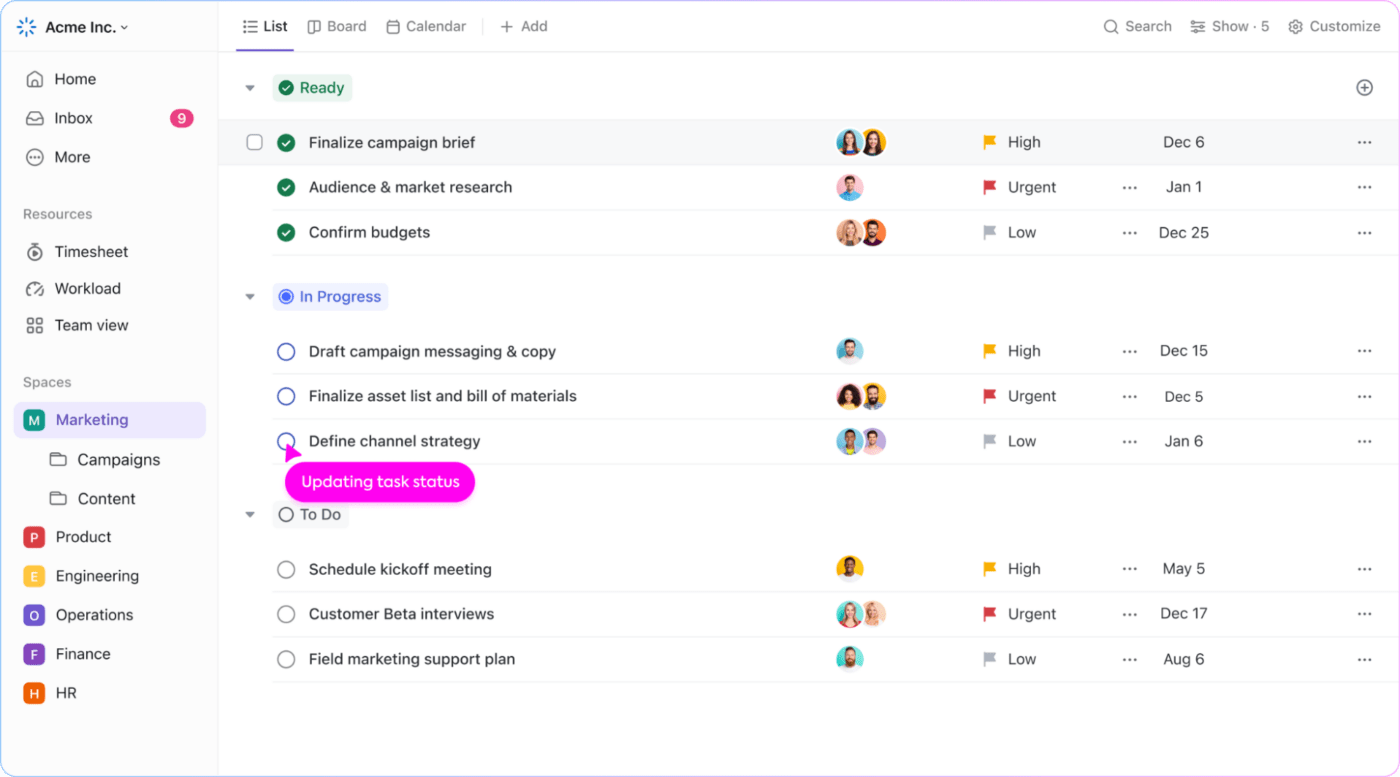How to Lead in a Hybrid Work Environment

Sorry, there were no results found for “”
Sorry, there were no results found for “”
Sorry, there were no results found for “”
Employees love having the autonomy to choose where they work from and when. A hybrid work model enables this.
According to a Gallup survey, 53% of jobs in the US are hybrid. While this model is lauded for improving work-life balance, it presents some unique challenges for team leaders.
For instance, you may wonder how to ensure perfect coordination between on-site and remote employees, evaluate their performances, or establish clear lines of communication.
In this article, we’ll address some of the major challenges in leading hybrid teams and how to tackle them. We’ll also share actionable tips on keeping your employees motivated and happy in a hybrid environment.
Hybrid leadership is the trait of effectively managing teams and departments working together in varied work environments. It combines remote and in-person skills. Cross-functional leadership strategies under hybrid work models adopt a flexible approach to prevent ambiguity and disengagement in such work environments.
While hybrid teams have existed for quite some time, there’s been a considerable boom in this space after the pandemic. This means many leaders now lead hybrid and remote teams without prior experience. Naturally, issues are bound to arise.
According to McKinsey, hybrid leaders ‘face an atmosphere of ambiguity,’ primarily because they have ‘limited visibility into the workloads and processes’ of their employees. This requires leaders to go above and beyond to assure employees that:
This also requires leaders to put greater emphasis on:
Hybrid work isn’t a plug-and-play solution. The challenges one company faces might not be the same as yours.
Lauder Institute Director, Martine Haas proposes 5Cs as a great way of assessing, understanding, and overcoming most challenges that stop you from building a thriving hybrid workplace. Let’s see what these 5C challenges are:
Communication issues can arise due to hierarchical structures, differing work hours, language, or cultural differences. When these issues are transferred to a hybrid work environment, they tend to multiply.
According to a survey of over 8,000 representative employees by Gallup, 23% of employees identified reduced cross-functional communication as a major challenge with hybrid work. Moreover, 21% of employees find it more difficult to coordinate work schedules, tasks, and timelines.
Technological challenges, combined with employees’ lack of experience with remote communication tech—and comfort levels when speaking through a screen versus face-to-face—can hinder your workflow if left unchecked.
A hybrid work environment presents significantly more coordination challenges than an office environment. The risk here is called ‘faultlines’—cracks that can quickly form between those working in an office and those working remotely.
Think of it this way: the effort needed to include remote teammates means they often miss out on short, impromptu chats and minor decisions made by the office crew. Over time, this becomes a habit, and suddenly, remote workers may find themselves out of the loop on bigger conversations and more important decisions.
It’s like missing out on the usual morning huddle before sharing project updates.
Connecting with your peers can be difficult when working remotely. Some workers may rarely speak up in virtual meetings, while new joiners can find it difficult to break the ice.
Hybrid workplaces also risk creating a ‘VIP Club’ of those who feel central and committed to your organization and an ‘outsider group’ that feels disconnected from work and social life.
Lack of connection can lead to lower productivity and increased attrition. This is supported by the fact that 24% of employees identified impaired working relationships with coworkers as a major challenge of hybrid work.
Remote work has the potential to endanger creativity at two levels—collective creativity and individual creativity. The collective creativity part is quite obvious.
Zoom meetings, at least initially, might not be able to replace the fluid conversations, sidebars, and the free flow of ideas that happens when employees engage in person.
Working solo for weeks might also dampen creativity for individuals because of the lack of spontaneous chats with colleagues—on topics as trivial as quirky desk decorations or as serious as a new breakthrough idea. Many workers may even miss the daily commute and fresh air.
Most of us need a mix of alone time and social buzz to keep our creative juices flowing. When the social aspect of a physical workplace is removed, it can be hard to unleash your creative side.
32% of employees feel less connected to their organization’s culture when engaging in hybrid work. That’s because working from home can be isolating, especially for new employees joining your company.
Without properly inculcating these cultural norms, even communicating can be difficult, much less connecting with peers across departments, teams, and geographical locations.
Besides these, remote teams face many other challenges. There is much less scope for employees to form strong interpersonal relationships, and there are high chances of misinterpretation and ambiguity.
Remote workers may also feel overlooked, harboring feelings of discontent and not being as valued or ‘in-the-know’ as office-goers.
Amid the challenges associated with hybrid work models, the reimagining of trust-building leadership strategies becomes essential. Here are some leadership strategies you can leverage as a hybrid team leader.
When leading a hybrid workforce, it’s ideal to adopt a result-oriented mindset instead of focusing on strict, inflexible work hours.
You may not need to have a clock-in system that measures the time an employee spends in the office. Instead, your focus should be on outcomes, i.e., whether your teams fulfill their goals and tasks within deadlines.

This requires you to prioritize coordination, communication, and transparency instead of strict work timings. The idea is to set unambiguously clear goals for your hybrid teams and take proactive steps toward their fulfillment.
ClickUp, the popular project management software, comes with ClickUp Goals and ClickUp Tasks to assist you with goal setting and tracking for hybrid employees. With these features, you can set actionable goals, measure their progress, and keep a close eye on who’s doing what and when.
With ClickUp Goals, teams can outline objectives with detailed descriptions, due dates, and measurable targets, making it easy to maintain accountability for a hybrid team. You can also break down large goals into manageable tasks and set specific targets to make them easier to hit.
Add multiple assignees and watchers to a task to ensure a clear, linear workflow that promotes complete transparency and ownership.

As hybrid workplace leaders, you must take steps to build a positive hybrid culture, one that is marked by openness to ideas, collaboration, communication, and respecting each person’s individuality and thought process.
Use collaboration software like ClickUp Docs to let members write and record their ideas, collaborate on project documentation, and take notes, all within ClickUp’s powerful task management platform.

You can also use ClickUp Whiteboards to sketch out different project outlines and ideas together—and launch tasks directly from your brainstorming sessions. Whiteboards can be accessed from anywhere, so your remote and in-office team members can collaborate synchronously when they need to.

Additionally, implement the following strategies to help aid the process:
Empower your team to become better decision-makers. Be generous with responsibility and authority in the hybrid work environment. This will help foster a sense of ownership, automatically improving productivity.
Welcome new ideas, and remember to give ownership and credit where it’s due. When you give team members the freedom to experiment and make their own decisions, you’re sparking collaboration and creative problem-solving.
ClickUp’s Team Management Plan Template is an excellent way to set up clear roles and responsibilities and maintain accountability for every action.
The Agenda View in the template empowers you to plan and structure team meetings efficiently. For departmental focus, utilize the Agenda by Department View to optimize everyone’s time. Lastly, stay on top of progress and tasks for each department with the comprehensive Status by Department View.
This template also lets you:
Managing remote or hybrid teams demands a slightly different approach to carrying out effective decision-making. The DAC model, for instance, involves direction, alignment, and commitment. Let’s break it down:

As a hybrid team leader, you must be able to collaborate beyond boundaries. You should feel comfortable reaching out to different departments and hierarchical levels, external stakeholders, and other relevant groups and coordinating with them across distances or time zones to get work done.
This means establishing and ensuring round-the-clock connectivity for off-site and on-site teams, seamless communication between you and other team members, and an effective system that breaks siloes and keeps everyone on the same page.
While this may not always be possible, you can achieve near-perfect connectivity with genuine effort and by following the many tips discussed in this article.
Experiment with ‘lunch and learn’ sessions
Virtual or in-person ‘lunch and learn’ sessions offer a relaxed and informal setting for employees from different departments to interact and connect personally.
By engaging in informative or entertaining discussions, colleagues can break down departmental silos, foster mutual respect, and build stronger working relationships. These sessions encourage cross-pollination of ideas, leading to increased collaboration and innovation across the organization.
Ultimately, hybrid leadership is about experimenting and being open to innovation. You need to constantly test which approaches work best for your team and which are clear no-gos. It’s also important to be open to feedback and accept that you can make mistakes.
Treat each failed ‘experiment’ as a learning opportunity. Every quarter, try out new approaches to managing projects or collaborating. Then, collect employee feedback on what they think. Continue with models that yield results and ditch anything that doesn’t.
A hybrid work model is much more dynamic than a traditional one. For instance, you, as the team leader, will have relatively less visibility into your employees’ daily activities. You might fall into the trap of unintentionally favoring an employee who comes into the office more often. While the bias may be unintentional, it can have a strong negative effect on workplace culture and the employee experience.
To avoid unconscious bias, you need a comprehensive system that keeps you aware and vigilant. This is where ClickUp’s Performance Review Template shines. It gives you a brief description of how well an employee did at the end of a project so you can give them real-time, objective, constructive feedback.
In addition, you can monitor your team’s day-to-day performance by examining the visualized tracking system that comes with ClickUp Goals and ClickUp Tasks.
Overall, you need to be aware of what’s going on but also avoid micromanaging your team. Trust in them, give them autonomy, and monitor how they perform throughout the project. That’s how you evaluate performance in a hybrid model.
As the hybrid work model becomes more popular among employees and businesses alike, you need to be ready for it.
The most important shift happens within your mindset. Shift your perspective from a work-hour-oriented framework to a goal-oriented one. Understand how you can leverage flexible working spaces and flexible working hours to attract the best talent and keep your team at their productive best.
To do this, try out ClickUp’s goal-setting and task-tracking features, communication and collaboration tools, and templates. These create the perfect ecosystem for leading with intention in a hybrid workplace.
Sign up to ClickUp and bridge the communication gap within hybrid teams.
© 2026 ClickUp